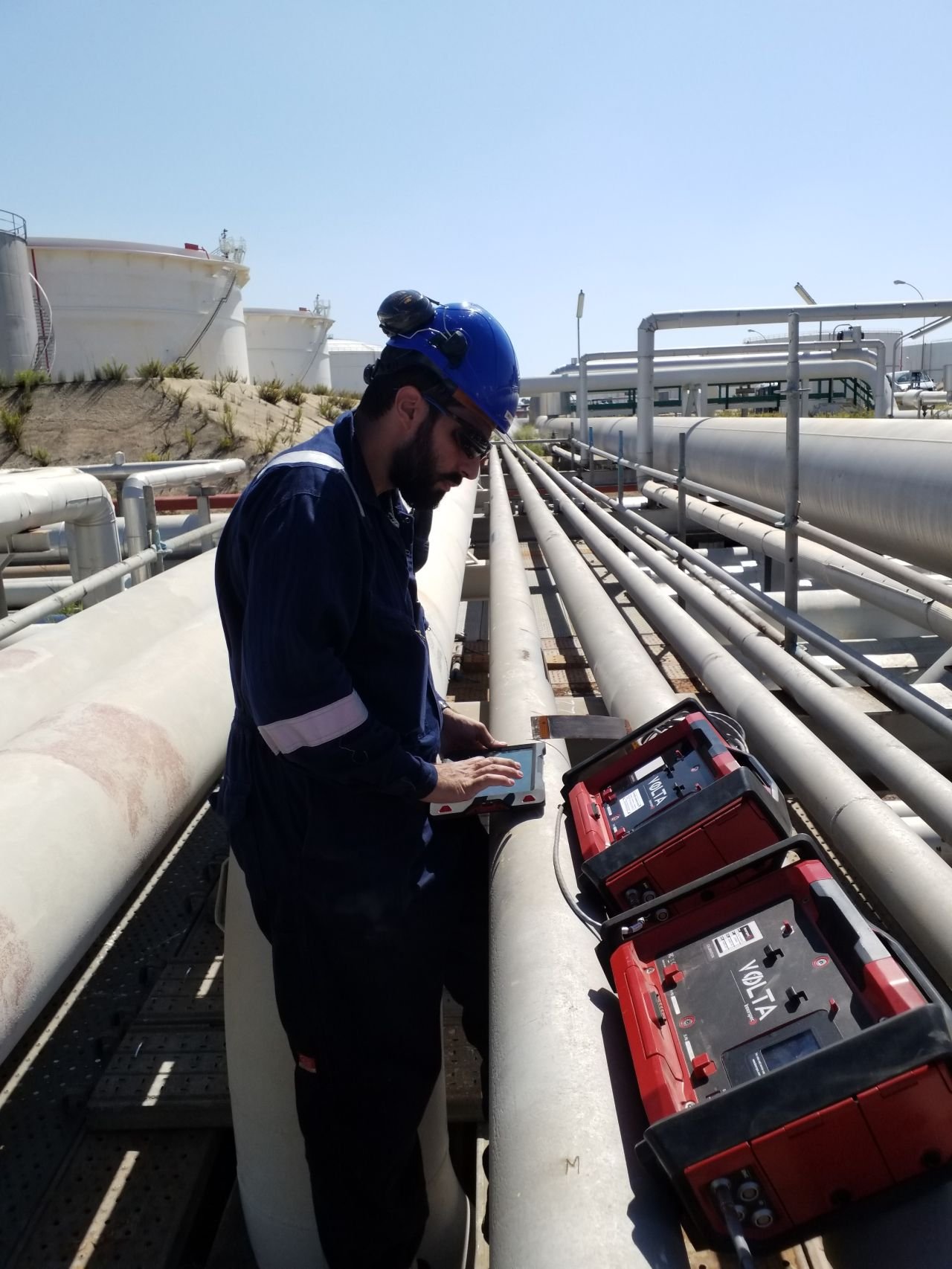The COPPERHEAD 20”- 60”
Robotic ILI Crawler with MFL-C, EMAT, or Laser Profilometry
The COPPERHEAD in-line-inspection (ILI) tool is a robotic crawler designed for the inspection of out-of-service pipe systems. This crawler is suitable for pipes between 20-60” in diameter. It's powered with a 5,000’ umbilical which transmits real-time video and data to the on-site NDE inspection engineer. The umbilical transmits data and power, and is wrapped in high strength steel members with a breaking strength of over 12,000 lbs. The COPPERHEAD inspection module utilizes various high resolutions NDE systems that rotates circumferentially allowing for the detection of wall loss and axial cracking. When there is an anomaly present, our technicians can evaluate real time and determine the threat level. The COPPERHEAD crawler can navigate multiple 90deg - 1.5d bends (24” and greater) and can also handle vertical sections.
Circumferential MFL detects wall loss and axial cracking
Direct Beam EMAT provides highly accurate thickness mapping
Laser Profilometry (LPM) provides ultra high resolution internal surface mapping
COPPERHEAD is light weight and can be loaded with minimal effort
Able to navigate diameter changes up to 12”
Rapid inspection speeds up to 2000ft per day
Deployment
Once the pipe is empty, a pipe access point needs to be created if one does not already exist.
The COPPERHEAD crawler is loaded into the pipeline and powered on.
The 8 legs extend to center the crawler in the pipe.
The sensor head will be extended to the pipe surface.
As the tool drives through the pipe, the NDE Module will rotate, covering 360 degrees of the pipe surface.
Specialized software analyzes the incoming signals real-time.
Balboa generates a report on the condition of the pipe, indicating the coordinates and sizes of the defective areas.







